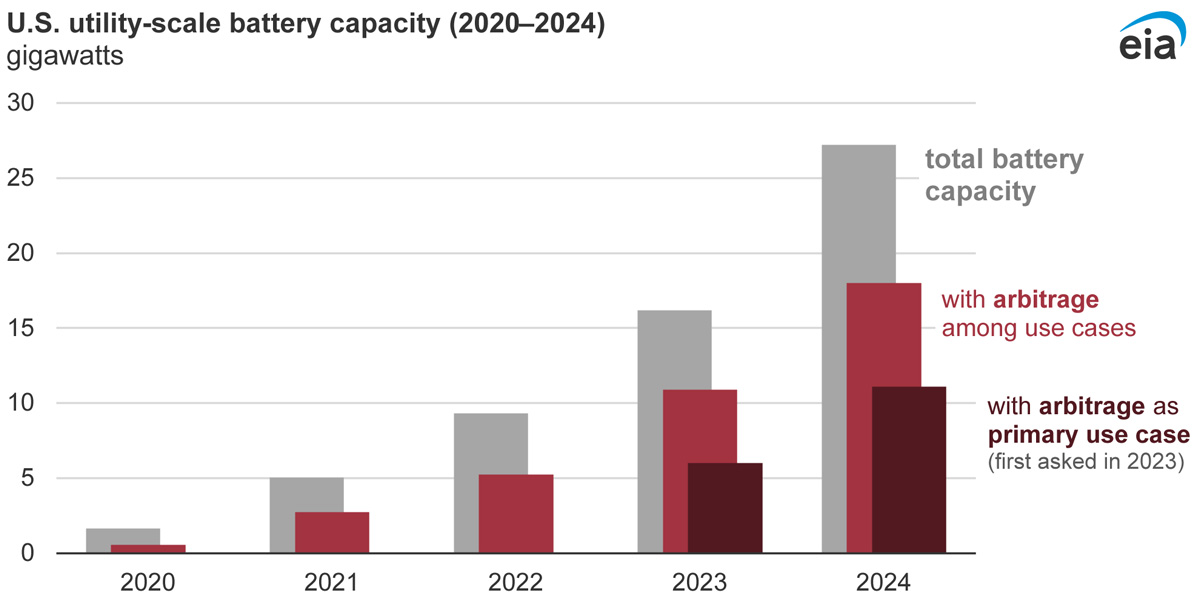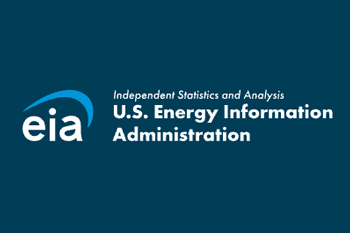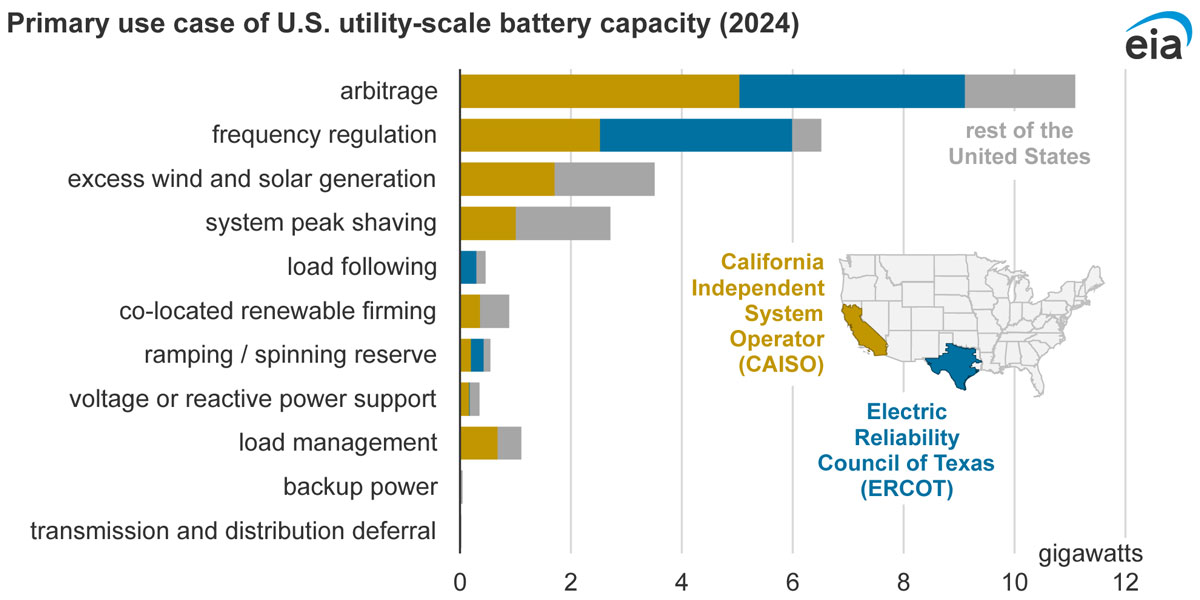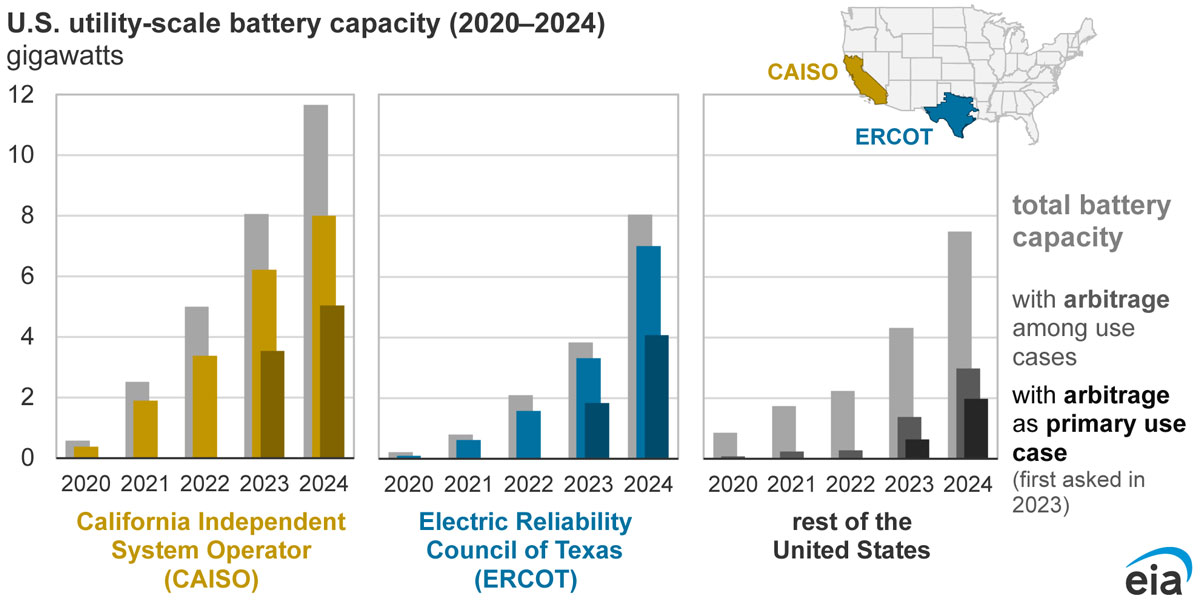
Data values: File 3.4—Energy Storage
 (EIA) In the U.S. Energy Administration’s (EIA) annual survey of power plant activity, they ask operators of utility-scale batteries how they are using their systems, and one use case is increasingly prevalent: price arbitrage. Arbitrage involves buying electricity when prices are relatively low and selling that electricity when prices are high.
(EIA) In the U.S. Energy Administration’s (EIA) annual survey of power plant activity, they ask operators of utility-scale batteries how they are using their systems, and one use case is increasingly prevalent: price arbitrage. Arbitrage involves buying electricity when prices are relatively low and selling that electricity when prices are high.
Utility-scale battery systems can be used for many applications. In previous years, EIA asked operators to identify the ways they used their batteries. Common use cases included price arbitrage as well as frequency regulation, excess wind and solar generation, system peak shaving, load management, and more.
Beginning with the 2023 survey, EIA asked operators to identify the primary use case for their battery system. Last year, operators responded that 66% of all utility-scale battery capacity had arbitrage among its uses and that 41% of the total capacity was primarily used for arbitrage.

Data values: File 3.4—Energy Storage
The next most common use case was frequency regulation, which was the primary usage for 24% of battery capacity. Frequency regulation involves maintaining the grid’s frequency of 60 cycles per second. In previous years, operators had reported that frequency regulation was the most common use case for their battery systems.
Much of the United States’ utility-scale battery capacity is in the two electricity markets that cover much of California and Texas. At the end of 2024, the California Independent System Operator (CAISO) reported 11.7 gigawatts (GW) of battery capacity, 43% of which was primarily used for arbitrage. The Electric Reliability Council of Texas (ERCOT) reported 8.1 GW of battery capacity, half of which was primarily used for arbitrage.

Data values: File 3.4—Energy Storage





